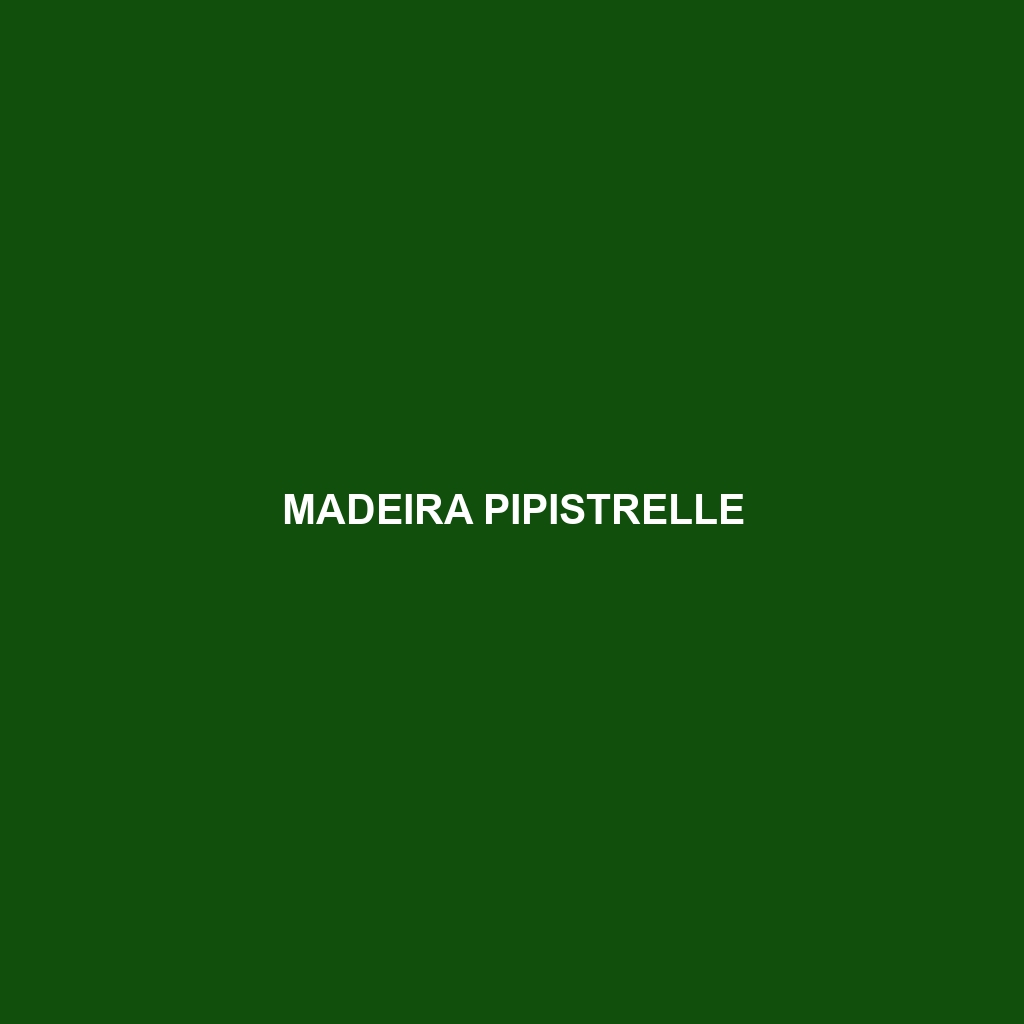Madeira Pipistrelle (Scientific Name: )
Common Name: Madeira Pipistrelle
Scientific Name:
Habitat
The Madeira Pipistrelle is primarily found in the **Madeira archipelago**, an area celebrated for its lush, mountainous landscapes. This species prefers **woodland** and **forest habitats**, often residing in **caves** and **rock crevices**. The warm, temperate climate of Madeira provides an ideal environment for these bats, allowing them to thrive in regions with dense vegetation and ample roosting sites.
Physical Characteristics
The Madeira Pipistrelle is a small bat, typically measuring about **3 to 4 inches** in length with a wingspan of approximately **10 to 12 inches**. Its fur ranges from light brown to dark brown, with a slightly lighter underside. A distinct characteristic of this species is its **short, broad wings** and **pointed ears**, which aid in their echolocation capabilities. Their sharp features and compact body shape make them well-adapted for maneuvering through forested areas.
Behavior
This species is primarily **nocturnal**, emerging at dusk to forage for insects. Madeira Pipistrelles exhibit agile flight patterns and are known for their unique **foraging strategies**; they often hunt in **mixed vegetation**, allowing them to capture a variety of prey. Socially, they tend to roost in small colonies, where they communicate using high-frequency sounds that are imperceptible to humans.
Diet
The diet of the Madeira Pipistrelle consists largely of **small insects**, such as **moths**, **flies**, and **beetles**. These bats are adept at catching their prey mid-flight, and their hunting habits are crucial for controlling insect populations in their habitat. Consequently, they play a vital role in maintaining ecological balance within their environment.
Reproduction
Reproductive activity in the Madeira Pipistrelle typically occurs in **late spring to early summer**, with females giving birth to **one to two pups** per litter. After a gestation period of about **6 to 8 weeks**, the pups are born and rely heavily on their mothers for nourishment and protection during their early months. These young bats often leave the roost for the first time within **five weeks** of birth, marking a significant milestone in their development.
Conservation Status
The Madeira Pipistrelle is currently listed as **vulnerable** due to habitat loss and human encroachment. Conservation efforts are essential to ensure the survival of this species, as they play an integral role in the ecosystem. Research and habitat restoration initiatives are ongoing to address the threats facing their populations.
Interesting Facts
One fascinating fact about the Madeira Pipistrelle is its remarkable **echolocation** skill. This ability allows them to detect and avoid obstacles, as well as locate prey, even in complete darkness. In addition, they are known to migrate between habitats seasonally, demonstrating their adaptability to environmental changes.
Role in Ecosystem
The Madeira Pipistrelle plays a significant role in its ecosystem by controlling insect populations. As **pollinators** of certain plant species and as prey for larger predators, they contribute to the biological diversity of the Madeira archipelago. Their interactions with both flora and fauna underscore their importance in maintaining a balanced ecosystem.
